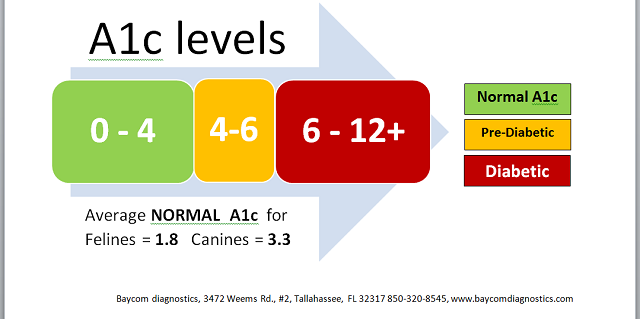A1C Levels Test Results Chart

The National Institutes of Health (NIH) refers to the worldwide increase in diabetes as a pandemic. More adults and children are being diagnosed with Type 2 diabetes. Approximately 90 percent of diabetics have Type 2 diabetes, but the number of Type 1, Type 1.5, and Type 3 (Alzheimer’s disease) cases continue to rise.
A normal A1C level is considered less than 5.7 percent. An individual with uncontrolled diabetes may have an elevated A1C level of 8 percent or more. The A1C test is often used to confirm a diabetes diagnosis or measure how well the individual’s diabetes is controlled by diet, exercise, and medication.
A1C Test Diabetes
Although some doctors measure resting glucose to determine if an individual has diabetes, the A1C test diabetes is considered a more accurate measurement. A1C “looks back” at the patient’s blood glucose levels over approximately 90 days.
The A1C levels chart below measures an individual’s estimated average blood sugar level.
A1C Levels Chart
The A1C test results chart correspondent to an individual’s average blood sugar level (in mg/ deciliter mg/dL, and millimoles/Liter mmol/L):
| An A1C level of 5 percent (no diabetes) equals | An estimated average blood sugar level of 97 mg/dL | About 5.4 mmol/L |
| An A1C level of 6 percent (prediabetes) equals | An estimated average blood sugar level of 126 mg/dL | About 7.0 mmol/L |
| An A1C level of 7 percent (diabetes) equals | An estimated average blood sugar level of 154 mg/dL | About 8.5 mmol/L |
| An A1C level of 8 percent (diabetes) equals | An estimated average blood sugar level of 183 mg/dL | About 10.2 mmol/L |
| An A1C level of 9 percent (diabetes) equals | An estimated average blood sugar level of 212 mg/dL | About 11.8 mmol/L |
| An A1C level of 10 percent (diabetes) equals | An estimated average blood sugar level of 240 mg/dL | About 13.3 mmol/L |
| An A1C level of 11 percent (diabetes) equals | An estimated average blood sugar level of 269 mg/dL | About 14.9 mmol/L |
| An A1C level of 12 percent (diabetes) equals | An estimated average blood sugar level of 298 mg/dL | About 16.5 mmol/L |
| An A1C level of 13 percent (diabetes) equals | An estimated average blood sugar level of 326 mg/dL | About 18.1 mmol/L |
| An A1C level of 14 percent (diabetes) equals | An estimated average blood sugar level of 355 mg/dL | About 19.7 mmol/L |
A1C Levels: Normal, Pre-Diabetes, and Diabetes
For a non-diabetic individual, a normal A1C level is less than 5.7 percent. Those with uncontrolled diabetes may have A1C levels of 8 percent or more:
- An A1C level of greater than 6.5 percent (on two tests) confirms diabetes.
- An A1C result of 5.7 – 6.4 percent is pre-diabetes.
- Individuals with pre-diabetes are considered at higher risk of diabetes.
Doctors considered an A1C of 7 percent as a realistic treatment target for most diabetics. A higher A1C target, up to 8 percent, maybe more achievable for some patients:
- If the patient’s A1C level is above his or her target, the doctor may recommend an adjustment to the treatment plan.
- Higher A1C levels put patients at greater risk for complications, such as heart disease, stroke, obesity, and cancer.
A1C Test Considerations
A1C testing may have limitations in some situations:
- If the patient experiences chronic or heavy bleeding, his or her hemoglobin may be depleted. In that case, the patient’s A1C levels may be inaccurately low.
Most patients have a single hemoglobin type, hemoglobin A. Some people have hemoglobin variants that can cause the A1C result to be either inaccurately high or low. Persons of Southeast Asian, Mediterranean, or African-American heritage may have hemoglobin variants:
- If the doctor confirms the patient has a hemoglobin variant, it may be necessary to perform special tests for accurate A1C results.
In contrast, patients with iron-deficiency anemia may have a false high A1C test result:
- Patients who’ve recently received a blood transfusion or who have other types of anemia should notify their doctor. Either condition could yield false A1C results.
It’s important to note that A1C results can vary between labs. If the patient’s doctor uses a new lab (or he or she changes providers), it’s prudent to consider the possibility for variation in A1C results.
https://www.ncbi.nlm.nih.gov/pmc/articles/PMC5291074/